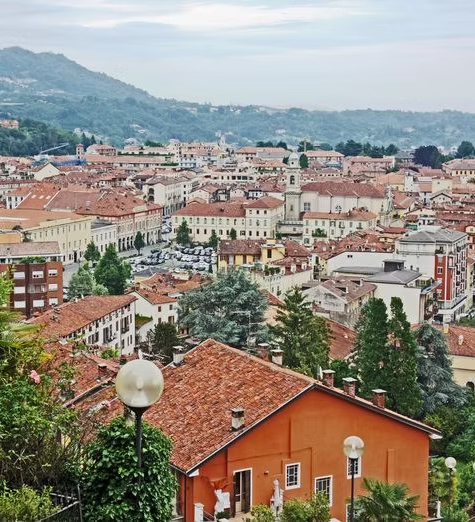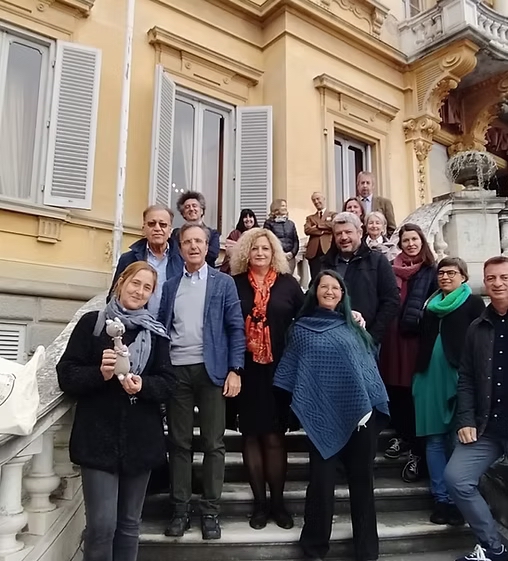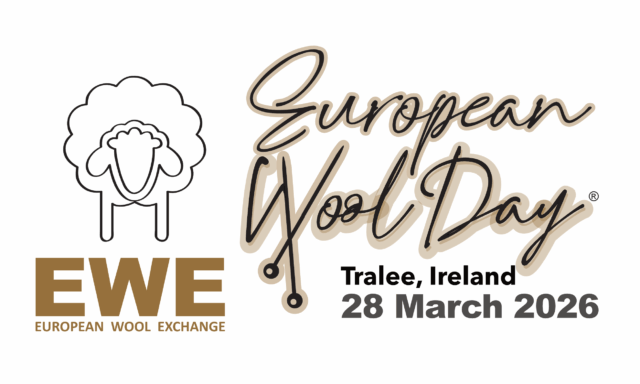
The Malpenga Declaration

The signatories of the Malpenga Declaration met in Biella, Italy, on 10th October 2019, hosted by the Panza di Biumo family in their historical house, La Malpenga, to share their experiences in the use of local, autochthonous wool in therapeutic knitting, crocheting and felting in health and various social projects.

THE MALPENGA DECLARATION
(rev. March 2022)
1. Wool represents today only 1% of the fibres used for clothes in the world, while 30% is made up of other natural fibre, like cotton, and 69% by synthetic fibres;
2. On the other hand, wool represents a major challenge for our society because of its animal origin and its association to two other important products, meat and cheese;
3. There are currently more than 100 million sheep living in geographic Europe that are mostly bred for their meat and milk. They naturally generate nearly 200,000 tons of wool every year. This wool has different levels of quality according to the breed and genetic characteristics of the sheep, the climate, the environment and the quality of nutrition. Only a limited amount of it is used locally by the textile industry, which prefers high quality wool such as cashmere, or much cheaper wool
mixed with synthetic fibres;
4. As sheep have to be sheared anyway, and this has a cost, farmers and local communities are suffering from this imbalanced economy. To seek solutions to this problem, poorer quality wool is now being used by the building industry for ecologically friendly house insulation and for industrial felting. Some experiments have been made to use wool as fertilizer or as efficient absorbing sponges to clean the sea from oil leaks;
5. However, the lack of value attributed to fleece means it has become regarded as a waste product. It is estimated that nearly half of the European annual wool load is being destroyed, buried or burned, with negative consequences on the environment. Additionally, the increasing use of synthetic fibres is having serious polluting effects on sea waters due to textile microelements entering our waterways and seas;
6. The signatories of this Declaration have all experienced the promising potential of using wool for health and wellbeing and also for craftmanship and art;
7. Research is demonstrating that the activity of knitting and crocheting have the potential to calm the mind, alleviating anxiety and pain and facilitating social engagement, with the added value of producing handmade items which can be delivered for the benefit of others in need;
8. This can contribute to create a new circular economy for wool and improve climate, the environment, communities and local industry;
9. The undersigned wish to raise awareness about the wool problem in Europe and to attract the attention of the authorities to the urgent need to regulate the sector and reduce the waste of wool to a minimum;
10. They represent a network of socially engaged end-users of wool and they develop, in the framework of the EWE Foundation, a series of different initiatives and activities as described in the website of the Foundation, including the future production of the first EWE wool yarn ball, made by traceable and sustainable European wool.
11. They also organise, on the 9 April every year, a general public awareness event called “European Wool Day” to which they invite everybody interested in wool to participate and contribute.
In alphabetic order: Nina Arnus, Zavod Tri, (knitting community Breja preja), Škofja Loka, Slovenia, Betsan and Steve Corkhill, Stitchlinks, Bath, UK, Alberto Costa and Ivana Appolloni, Gomitolorosa, Rome, Italy, Alberto Diaz, Las Hidalgas, Lèon, Spain, Isabella Kailidou, Roz Malì, Nicosia, Cyprus, Sandra Kerovec, Ozana, Zagreb, Croatia, Dora Kaszàs, KotES, Budapest, Hungary, Alexandros Michaelides, Talos, Nicosia, Cyprus, Anka Pintar, Zavod Tri, (knitting community Breja preja), Škofja Loka, Slovenia, Conception Rey Mejias, Associacion La Iaia, Madrid, Spain.

